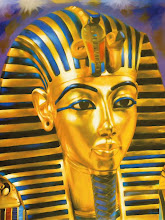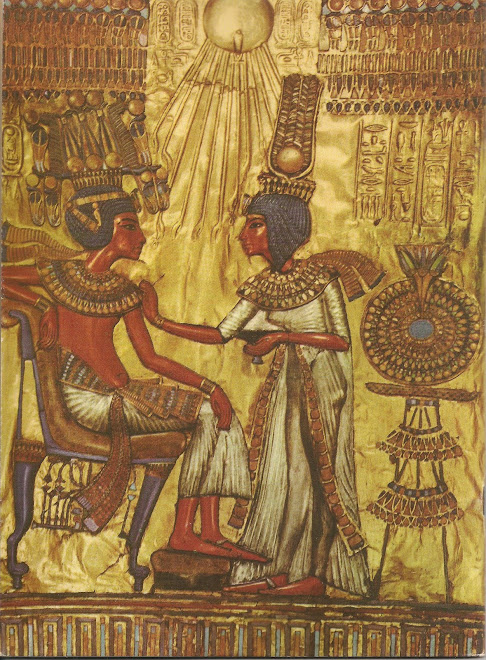domingo, 17 de abril de 2011
Lords of Chaos
Info About The Book:
Lords of Chaos: The Bloody Rise of the Satanic Metal Underground is a book by Michael Moynihan and Didrik Søderlind. The book presents itself as a non-fiction account of the early Norwegian black metal scene, with a focus on the string of church burnings and murders that occurred in the country around 1993. A film adaptation of the book is planned, to be directed by Japanese director Sion Sono.[1] The book has been the subject of controversy over the alleged political leanings of author Michael Moynihan,[2][3] though Moynihan denies these allegations.[4]
Publication history
Lords of Chaos was originally published by Feral House in 1998 (ISBN 0-922915-48-2). A second, revised edition was released in 2003 and expands the original book by fifty pages (ISBN 0-922915-94-6). A German edition was published in 2002 with a respective revised edition following in 2005 (ISBN 3-936878-00-5).
Contents
The book focuses on the scene surrounding the extreme heavy metal sub-genre black metal in Norway between 1990 and 1993. The first few chapters give an outline of the progression of heavy metal from bands such as Black Sabbath, Coven, and Black Widow to proto-black metal bands such as Bathory, Mercyful Fate, and Venom and finally to the early Norwegian black metal band Mayhem.
The book then details the April 1991 suicide of Mayhem front man Per Yngve "Dead" Ohlin and the formation of a radicalized "inner circle" around Øystein "Euronymous" Aarseth, based out of his small black metal retail shop Helvete (Norwegian for "hell") in Oslo, Norway.
In 1992 and 1993, members of the group became connected with a series of crimes, starting with the arson of the Fantoft stave church on June 6, 1992, although the book mentions that there had previously been a "small, ineffectual fire at Storeveit Church".[5] Church arsons continued but with a steady decline up until the year 1995. (The cover of Lords of Chaos shows a "19th Century Swedish church in flames").[6]
An interview in a Norwegian Newspaper given by Burzum founder Varg "Count Grishnackh" Vikernes, also a member of the Helvete group, leads to a media outrage condemning the arsons as acts of Satanism. On August 21, 1992 Bård "Faust" Eithun of the band Emperor murdered a homosexual man in the Olympic Park in Lillehammer. He was subsequently convicted of this crime and sentenced to 14 years in prison (of which he subsequently served nine years before being released in 2003). On August 10, 1993 Aarseth was murdered by Vikernes, who received a 21 years sentence for the murder and several cases of arson related to the church burnings.
The book also mentions other cases of "satanic" murderers, such as that of Sandro Beyer by members of the German National Socialist black metal band Absurd and Caleb Fairley in the USA. It also devotes several pages to the case of a self-styled teen militia named "Lords of Chaos" that perpetrated murder and arson in Fort Myers, Florida in April 1996,[7] but does not mention why the title Lords of Chaos was chosen for the book.
Interview passages with Varg Vikernes are spread out through several sections of the book. On www.burzum.org Vikernes has said, that he would not use the term Nazi any longer as self-descriptor, however, the statement is ambiguous.[8]
An interview with Vikernes about Nasjonal Samling founder Vidkun Quisling, executed in 1945 for High treason by the Norwegian government after the end of the occupation of Norway by Nazi Germany, is the main source for Vikernes admiration of him,[9] and the source for the rumor that Quisling had some influence on certain extreme strains of Norwegian black metal.[10]
The book presents other interviews with Anton LaVey, founder of the Church of Satan, Tomas "Samoth" Haugen of Emperor and Dani Filth of Cradle of Filth. Filth claims the existence of a "Satanic Gestapo", when he recounts an incident where he was apparently attacked on stage with a knife (which he states may have been a prop) during a concert in Germany.
The book puts forward its own thesis[according to whom?] about the reason behind the extreme music, the arsons and the cases of murder, interpreting these events as the appearance of an odinic archetype.[11][dubious – discuss] Within this scope, the psychologist Carl Jung is quoted[12] and also a study Pathological firesetting from the year 1951.[13][14]
Satanism and the heathenism from which it ultimately descends are themselves the products of the archetypes and differentiated psyches of nations and peoples, and they therefore spring from the same “occult” or mystical sources as nationalism itself. Nationalism is the political manifestation of a folk’s unconscious; heathenism/Satanism is the spiritual manifestation.[15]
The book goes on to compare the state sought by the commission of these violent acts with the apocalyptic Norse tale Ragnarök, but states that neither radicalized black metallers nor "their occasional allies, the right wing revolutionaries" may have found "the fuse on the powderkeg of alienated resentment which lies behind the façade of 20th century civilisation", yet that such a "powderkeg" exists nonetheless.[16]
Critical reaction
Reviews of Lords of Chaos have been mixed, with several critics praising the book for offering an informative or at least interesting view on a relatively obscure sub-culture, and the book won the 1998 Firecracker Alternative Press Award.[17] The publication was sometimes criticized for a perceived lack of distance towards its subject matter. This was considered especially alarming to groups and figures that had accused Moynihan of right-wing sympathies,[2] charges which Moynihan has denied.[4]
German online magazine Telepolis questioned Moynihan's neutrality towards the ideologies portrayed in the book, as it leaves several far-right and racist statements by interviewees such as Vikernes uncommented on and uncriticized. The author's questions during these interviews are noted to resemble "cue-giving" at times.[3]
While a reviewer for the left-oriented German newspaper Die Tageszeitung did not appreciate Moynihan earning royalties from the sales of Lords of Chaos, he still called it "the most thrilling non-fiction book since the Old Testament".[18] Televangelist Bob Larson stated that he and Moynihan were "poles apart spiritually and philosophically", but that he respected the book as an "exhaustive resource regarding the seamy and Satanic side of pop music and culture".[6]
Journalist Kevin Coogan wrote an essay titled "How Black Is Black Metal?" in which he discusses several of the ideas purported in Lords of Chaos. Coogan considers Moynihan's personal political beliefs to be "at work just below the surface of a text ostensibly devoted solely to analyzing an extremist musical sub-culture" and ultimately counters the book's apocalyptic thesis with the conclusion that the black metal/fascism connection hangs largely "on a thin evidentiary thread", namely Varg Vikernes, who had shown extremist tendencies well before entering the scene.[2] Coogan states that Moynihan is "an extreme rightist whose fusion of politics and aesthetic violence shapes a not-so-hidden sub current that runs throughout LOC". Coogan writes that the book itself:
...is not a "fascist" tract in the strict sense of the term, in part because Moynihan co-wrote the book with Didrik Søderlind, a former music critic for a mainstream Norwegian paper who is now (as of 2005) an editor at Playboy. Moreover, Feral House editor Adam Parfrey clearly wanted to publish a popular book on the strange universe of black metal rather than a political polemic.[2]
Moynihan, in turn, has denied Coogan's allegations.[4]
Varg Vikernes, a primary focal point of the book, has expressed criticism towards the book. Vikernes states that the authors of Lords of Chaos have no "insight into or even good knowledge about the subjects discussed" and "don't understand one bit what Black Metal was about on 1991 and 1992" and that they "have managed to fill the heads of a generation of metal fans with lies".[19]
However, an article on www.burzum.com that is allegedly written by Varg Vikernes evaluates the book differently. There it is said that "the book is pretty much objective",[20] and although this statement is followed by a criticism of some of the people that were interviewed, it is far less polemical than the one on burzum.org. Vikernes states that www.burzum.org is the official site where he speaks out and has asked burzum.com to be shut down, though they refuse to do so for the reason that they believe that Vikernes does not understand what he is asking.[21] Still the legitimacy of burzum.com is strongly debatable, since it was not created and managed with Vikernes authorization, whereas burzum.org is.
Film
Japanese director Sion Sono is set to direct a movie based on the book, with Jackson Rathbone starring as Vikernes.[1][22] It will be Sono's first English-language film. The screenplay was written by Hans Fjellestad (who was earlier reported to be the film's director as well[23]), Ryan Page, Adam Parfrey (the book's publisher), and Sono.[24][25][26] In July 2009 Sono stated that filming (in Norway) would begin in August or September and end in December.[1][27] The film is set to be released in 2010.[dated info][24] However, it was later announced that Rathbone would no longer be playing Vikernes due to scheduling conflicts.[28]
Article Extracts Taken From: http://en.wikipedia.org/wiki/Lords_of_Chaos_(book)
Lords of Chaos Petition (From YouTube):
More Info:
http://www.amazon.com/Lords-Chaos-Bloody-Satanic-Underground/dp/0922915482
http://www.locthemovie.com/
http://en.wikipedia.org/wiki/Satan_rir_media
http://en.wikipedia.org/wiki/Fascist_satanism
http://en.wikipedia.org/wiki/Neo-v%C3%B6lkisch_movements
Subscrever:
Enviar feedback (Atom)


+001.jpg)

.jpg)
.jpg)









+001.jpg)


+001.jpg)
+001.jpg)
+001.jpg)






+001.jpg)
+001.jpg)





+001.jpg)



+001.jpg)

+001.jpg)

+001.jpg)
+001.jpg)
.jpg)



Sem comentários:
Enviar um comentário
Nota: só um membro deste blogue pode publicar um comentário.